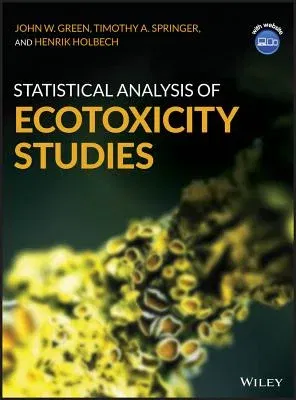A guide to the issues relevant to the design, analysis, and
interpretation of toxicity studies that examine chemicals for use in the
environment
Statistical Analysis of Ecotoxicity Studies offers a guide to the
design, analysis, and interpretation of a range of experiments that are
used to assess the toxicity of chemicals. While the book highlights
ecotoxicity studies, the methods presented are applicable to the broad
range of toxicity studies. The text contains myriad datasets (from
laboratory and field research) that clearly illustrate the book's
topics. The datasets reveal the techniques, pitfalls, and precautions
derived from these studies.
The text includes information on recently developed methods for the
analysis of severity scores and other ordered responses, as well as
extensive power studies of competing tests and computer simulation
studies of regression models that offer an understanding of the
sensitivity (or lack thereof) of various methods and the quality of
parameter estimates from regression models. The authors also discuss the
regulatory process indicating how test guidelines are developed and
review the statistical methodology in current or pending OECD and USEPA
ecotoxicity guidelines. This important guide:
- Offers the information needed for the design and analysis to a wide
array of ecotoxicity experiments and to the development of
international test guidelines used to assess the toxicity of chemicals
- Contains a thorough examination of the statistical issues that arise
in toxicity studies, especially ecotoxicity
- Includes an introduction to toxicity experiments and statistical
analysis basics
- Includes programs in R and excel
- Covers the analysis of continuous and Quantal data, analysis of data
as well as Regulatory Issues
- Presents additional topics (Mesocosm and Microplate experiments,
mixtures of chemicals, benchmark dose models, and limit tests) as well
as software
Written for directors, scientists, regulators, and technicians,
Statistical Analysis of Ecotoxicity Studies provides a sound
understanding of the technical and practical issues in designing,
analyzing, and interpreting toxicity studies to support or challenge
chemicals for use in the environment.

